Introduction
When using a home cold composting system most people just add material to the bin as, and when, it becomes available. This is clearly a convenient system as vegetable peelings and other kitchen waste are produced throughout the year, as is a supply of Browns in the form of cardboard and shredded paper.
On allotments the picture is slightly different as some allotment gardeners only seem to grow spring and summer crops and once these have been harvested, and the plot dug over, disappear for the winter months. The plot holder only appears on the allotment at irregular intervals during the winter months to harvest the occasional root crop, Brussels sprout stalk or leek. On such plots, there will only have a very limited amount of vegetable tops or trimmings available during the winter months and the compost bin can be allowed to join its owner in virtual hibernation.
However, other allotment gardeners adopt a more challenging system involving succession planting so that are crops are harvested for most of the year. In these cases at least one allotment compost bin can be insulated and kept operational during the winter months (see winter composting) to deal with the compostable material from these plants as they are harvested.
As this is a composting website, I felt in would be a useful to include those vegetables that can be harvested during each month of the year to give an indication of the possible source of compostable material in the form of tops, tails and other trimmings or plants as they are discarded after cropping. I leave the gardeners to look up the sowing dates necessary to get the steady supply of fresh home grown food across the year.
Spring March to May 31
Starting a New Bin
Any time of year is a good time to start composting but each season offers its own advantages.
Starting a compost bin in spring offers the opportunity to take advantage of the warmer weather and the increasing activity of the composting microorganisms and compost creatures. However you will need material to start and feed your bin. At home, where there is a regular supply of kitchen waste, and if the temperature is about 10°C for most of the time, material can be added to the bin knowing that microbes will spring into action.
Depending where you live some authors suggest starting the bin once the temperature is above zero on most days but in the UK I would suggest waiting a few weeks for it to get a little warmer. My recommended indication of the time to start a new bin is once the grass on the lawn, or allotment paths, has grown enough to need cutting as this will provide a regular source “Greens” to start the bin if there is little in the way of other garden waste available
Even if you are not planning to use a batch or hot composting approach (Composting methods) I would suggest that when starting a new compost bin or heap in the spring, the material is turned, or aerated with an aeration tool, do this regularly for the first few weeks to allow air into its deeper pockets. This is particularly the case if grass is being composted as it not only needs aerating but also will require mixing with a plentiful supply of Browns e.g. shredded paper and corrugated cardboard.
Reawakening Existing Bins
If you already have a compost bin or heap, it will reactivate naturally, as the temperature rises. The materials that have sat in the bin relatively inactive during the winter will start or recommence decomposing without help from us, although the addition of coffee grounds helps wake up the bins just as it does us..
Adding more natural materials to those left from the previous season give the bin a boost, and the feeding of the bin can be increased as more resources become available (see below) .
As with new heap aeration will speed up the process and as the temperature in the bin increases. (See compost temperature).
Spring is also one a good time of year to harvest compost for use on the garden (Using Compost).
Material for the bin will also be available as a result of the spring tidying of the garden, cutting back and removing dead leaves from perennials that had been left on the plant over winter to provide some frost protection.
In the ornamental garden the spring pruning and cutting back will provide a good source of material. e.g. Buddleia, Catalpa, Cotinus, Late flowering Clematis, Dogwoods, Hydrangea, , Paulownia, Cornus, (Rubus), Viburnum, and Willow. I would advise shredding all woody prunings.
The last remaining winter vegetables can be harvested and their tops and trimmings added to the compost bin in March, these might include Brussels sprouts, celeriac, parsnips and swedes. Spring prunings from blackcurrants, blueberries, gooseberries and autumn fruiting raspberries can be composted after shredding. March may also see the first cut of the lawn anwhich will provide grass for the bin.
April may provide spring cabbages, cauliflower and sprouting broccoli as well as weeds removed when preparing seedbeds. The prunings of plums and cherries might also be available for composting in April. thisl is the time to prune shrubs such as Forsythia, and depending on the weater there may well be materials from the first hedge cut of the year as well as prunings from Cornus, Lavender and Salix.
April is a good time to Hoe beds and borders to remove weeds while they are still young. if cool composting is is better to drown or dry any perinnial weeds before composting. If hand pulling weeds as much soil as possible should be removed before composting.
May should see a rise in temperature helping the compost bin to move into gear, and weeds to multiply providing an addition source of fresh young “green” material for the bin. The vegetable harvest may include tops turnips and trimmings from fresh garlic. Once spring flowering shrubs have finished, they should be cut back to control their shape and size and this will provide more material to shred and compost. Examples are Camellias Clematis, Philadelphus, Rhododendrons and Spiraea. Spring bulbs will need dead heading. If cutting back evergreen and yew hedges Shred the material and compost it separately if possible if not add them to the bin in small a quantities well mixed with grass and/or food waste material.
If growing Comfrey the first cutting can take place when the foliage is 12 to 18 inches tall. Cut about two inches above the ground. It should be possible to continue cutting the comfrey every 10 to 30 days through the summer months.
Compost can be used as a mulch once the soil has warmed up in mid- to late spring. It should be applied when the soil is moist. Home compost used as a mulch takes some time to breakdown which means that as well as impoving water retention it will surpress weed growth. Mulch can also be added around the base of fruit trees although care should be taken to avoid the trunk
Compost can also be used to top dress the lawn in the spring to start the season but do it early so that the lawn will be looking good when you want to use it. The use of compost to make liquid feed is given on a separate page Liquid Feed.
Allotment Composting during spring and summer dry periods
On occasions the spring and summer can be very dry in the UK which presents an interesting situation when community composting on the allotment, a shortage of “Greens”.
Composting requires a balanced mix nitrogen rich “Greens” and carbon rich “Browns” and at home with materials available from the garden, kitchen and packaging this does not present a problem. However, on the allotment the situation may be more challenging.
Greens are usually green in colour, hence the name, or are from plants that were green at some point and include fresh weeds, leaves, and vegetables tops, plants that have bolted and fresh grass clippings, if available (many allotments no longer have grass paths).
Browns are usually brown in colour, or naturally turn brow. They are carbon-rich materials that help to add bulk to the material assisting air to filter through the bin. Brown materials include woody plant material and dried leaves, dried grass clippings, hay , straw and cardboard. Some Browns may have started life as greens but as they have aged or dried out, they lose nitrogen and turn brown at the same time. Green leaves will have had a high level of nitrogen when fresh, but as they dry and go brown(ish) the nitrogen levels drop.
As can be seen from the photos much of the material left in the Reception bins during May and early June consisted of dried grass, weeds, and plants. If the “working” compost bin is allowed to get too dry the decomposing process will slow as the microbes will not be able to function effectively. There is a need to maintain the moisture level by watering the heap as fresh material is added. But there is still a need to find and add Greens. Luckily, the answer can be found in the manure heap or chicken house.
In recent years, the use of manures in making compost has be criticized because of the perceived risks to health and concern that pathogens in the manure might infect the composter and contaminate the vegetables grown where the compost has been used. In fact, the risks are easily kept at an acceptable level and benefits of using matured cow manure far outweigh the risks particularly when there is a shortage of greens. Most allotments will have an arrangement with a local farmer to deliver cow manure and it is a good idea to keep a separate pile on the plot so that it matures. Chicken manure is good if birds are kept on the plot.
When using manure in a pallet bin where the organic material has dried out, I use woody browns as the base layer at the bottom of the bin followed by the dried organic material, without trying to separate it into greens and browns. This is followed by a thin layer of manure. Each layer is patted down and ensure that it is level. Alternate garden waste and manure layers are continued until the bin is full. It is then topped off with a 1 – 2-inch layer of completed compost or garden soil
Summer –June, July and August.
The compost heap will be working at its best during the hotter summer months as the warmth and rain increase the activity of the composting micro-organisms. A cold system will be at its maximum rate of decomposition, helped by the regular addition of feedstock and aeration. As temperatures increase plastic bins and covered heaps may dry out so it is important to monitor the situation and water if necessary
If hot composting requiring the addition of composting material in batches sufficient to fill the bin it helps to layer the materials alternating nitrogen rich Green organic matter a with a layer of Browns. The bin or heap should be watered when adding the layers and during dry periods regularly moisten when turning the contents to aerate and maintain the temperature. The objective is to hold the material at a temperature at 50C plus for as long as possible. Ensuring that there is a layer of Browns on top of the compost will help reduce the number of fruit flies
If hot composting using a Green Johanna or a Hotbin only the top layers will need aerating not the whole pile as is necessary when batch composting with a New Zealand bin.
If rapid or hot composting techniques are being used producing compost in only a few weeks, the first of this year’s compost will be ready to ready to harvest during the early summer period. This should be covered and stored to allow it to mature in a maturation bin. Providing sufficient organic waste is available, it should be possible when using hot composting techniques, or a tumbler bin, to produce several batches of compost over the summer months.
Compost any remaining leaves and flower heads from spring flowers as they go over. Weeds will be growing well and where as non-seeding annuals can be added directly to the bin perennials should be drowned or dried out before being added to the composting mix.
The vegetable garden should be producing a bumper crop of vegetation for the compost bin in June. These might include the tops of new season early potatoes and beetroot, which can be added to the allotment bin.
Spring flowering shrubs and trees such a cherry, deutzia, kolkwitzia, lilacs, peonies philadelphus, weigela and wisteria and dead flowers form Camellias and Rhododendrons. Ornamental Alliums, Poppies and Pulmonarias. Perennials such as Delphiniums and Lupins should d dead headed to encourage second flowering
The lawn should continue to supply a good quantity of grass which will need balancing with carboard, shredded paper and bulking agen such as the shreddings from the woody plants.
The kitchen compost bin will benefit from the pods of peas and broad beans followed by French and runner beans in July.
July will also provide leaves removed to provide access to courgettes, carrot, beetroot, and more potato tops as well as trimmings for summer salads. There may also be some apples and pears if there is a heavy crop which thinning out. July pruning of Cherry and plum trees after fruiting will continue to provide a source of shredded woody material. Hardy Geraniums will need tidying as will Dahlia, Delphiniums and Lupins once they have finished flowering. Mowing and hoeing will continue to provide a source of greens
August should see the last of the early planted broad beans and enabling the bean plants to be pulled up, chopped and added to the compost bin. It also sees the start of the sweet corn crop. Any stalks pulled up accidentally during harvesting should be chopped or shredded before composting. The sweet corn cobs should be chopped and composted once the corn has been removed/eaten.
This is the main time of year for pruning fruit trees and bushes (except cherries and plums) providing shredded “Brown” material for the compost bin.
As a composting bonus, there will be leftover salad and other food from barbecues as well as the ash from lump wood charcoal (not briquettes).
Wisteria, Rambling Roses and fruited canes of summer raspberries should be pruned, and beech hedges cut back and shredded. Hardy geraniums should be tidied while their growth easily be seen. Conifers can be cut back.
Many composting sources say that hair can be composted but it never seems an effective use of time to collect a few strands of human hair from the comb or brush. Nevertheless, summer can see dogs shedding their winter coats and even if the hair is not saved from grooming there is likely to be sufficient collected when vacuuming to make a trip to the allotment compost bin worthwhile. As I have two Clumber Spaniels which shed continuously throughout the year my vacuum cleaner provides a constant supply of dog hair.
Continue harvesting comfrey every two weeks to make Comfrey Tea of as an activator in the compost bin.
During the summer, if you have a lawn, there should be a good supply of grass clippings.(I know I am repeating myself but grass does provide a problem for many composters). When adding these to the bin be sure to add sufficient easily digested Browns to prevent them forming a black, smelly, anaerobic mat inside the bin. If you find that you have more than you can compost in your bin, consider Grass Boarding layers of grass and cardboard.
I find that mixing either woodchip from the chicken house or shredded summer prunings, as a bulking agent, with a generous supply of shredded paper or corrugated cardboard works well when composting grass in a Green Johana avoiding the problems associated with anaerobic decomposition of grass. The grass will bring the bin up to temperature quickly and weekly mowing will help maintain it at a reasonable level.
When mowing a small lawn and composting producing a large grass box of mowings a week (filling about a quarter of the bin) Hotbin recommend adding 4 parts bulking agent to 20 parts grass cuttings.( 8 litres of bulking agent per 40l of grass). With a large lawn that generates 3, 4 or more boxes (about 60-80L) each week a dedicated bin will be required. The compost should be ready for harvesting after about 90 days, for more detailed information see the Hotbin Summer Newsletter go to: info@hotbincomposting.com via mail25.sea91.rsgsv.net
If a break is required from mowing the lawn it can be fed using a 50:50 mix of sharp sand and sieved compost to form a layer about 2.5 cm thick during the summer. This may look unsightly initially but will soon disappear. Alternatively, compost tea can be used to feed the lawn.
If the compost heap starts overflowing either start a new bin or store the material until the heap subsides and the waste can be added. Stored green material may start to decompose but it can still be added to the bin when space becomes available. It is helpful to turn the compost heap, or bin, to mix the new material and aerate it to encourage the composting processes before the onset of the autumn.
Towards the end of the summer it is advisable to check the consistency and moisture level of the contents. If the material is too dry more greens can be added e.g. nettles and annual weeds along with water or the sludge from compost tea. If too wet crumpled cardboard, shredded paper, woodchip or sawdust can be added.
Harvesting the Compost
Finished compost is a rich dark brown colour, has an earthy smell and crumbles in the hand. If using hot composting techniques, the process started in the early summer should be ready in 3-6 weeks and while the compost produced by cold composting is normally harvested in the autumn it is worth checking towards the end of the summer whether the process is complete.
Autumn – September, October and November.
As with every other season autumn is considered by some as the best time to start composting. It is certainly a time that, because of the tidying and cleaning up of the garden in readiness for winter, there should be plenty of material to compost and if undertaken early in the season the bin should have time get into its stride before the worst of the cold weather.
Autumn is also recommended as the best time to harvest compost made by cold composting techniques and is also a good time to apply compost as a mulch. Compost and manure is usually dug into the plot during November or applied as a layer over raised beds. Compost can also be applied both to established beds and around specimen plants. It can also be used as mulch to top dress the lawn in the autumn when people are less likely to spend time in the garden and may not worry that the lawn has taken on a brown appearance. If harvesting a plastic Dalek type bin, it is easier to lift the bin off the compost than to try to remove the compost through the hatch provided.
Whether starting a new bin, or operating an existing one, getting it actively decomposing throughout the autumn, when the weather is kind, will help to provide a good crop of compost in the spring. If an open pile or New Zealand bin is being used cover it, either with carpet, tarpaulin or a compost duvet, to prevent the material becoming water logged and aerate it to keep it working for as long as possible.
There is likely to be a considerable amount of compostable material available in the autumn but much of it will be bulky such as pea or sweet pea vines. The volume can be reduced by
shredding. Shredding increases the surface area of waste to the microbes in the compost. If a shredder is not available, the waste can be spread on the lawn or a grass path and mowed using a rotary mower.
Mowing or shredding
is also advisable when dealing with herbaceous plants such as asters, delphiniums the stems of which would otherwise be slow to decompose. Even if the material added to the bin is not usually shredded during the rest of the year, it helps to do so with autumn
waste to speed decomposition of the material before the start of the cold weather.
If the compost heap starts overflowing either start a new bin or store the material until the heap subsides and the waste can be added. The surplus material can be stored in a covered pile or buckets. It is important to keep the stored material dry, as dry material will heat up more quickly than wet. When added to the compost bin. Material being saved in the autumn for use as bulking agent in food composting e.g. sawdust or composted wood chip should also be kept dry. (I keep mine in plastic dustbins)
There is likely to be a lot of material available at this time of year in addition to that already mentioned.
In September crops of aubergines, courgettes, beans (French and runners), beetroot, carrots, chillies, cucumbers, peas, peppers, tomatoes, swiss chard and sweetcorn will be coming to an end and autumn crops such as leeks, main crop potatoes and swedes will be ready to harvest. These should be trimmed on- site and tops and trimmings added to the compost bin rather than carried home as pulled or picked. Squashes and pumpkins plants will be available once the fruit has matured and is harvested, Carved pumpkins can be composted after Halloween Composting Pumpkins
There will also be windfall plums, apples and pears all of which can be composted.
Comfrey can be harvested until late September when it should be left uncut for the leaves to die off naturally.
In October, any remaining summer crops can be composted along with potato helms and more beetroot tops as they are lifted. Any remaining climbing bean, pea or tomato plants can be shredded or chopped into small pieces for composting as the supports are taken down. Discoloured and blotchy leaves are safe to compost as the organisms causing the blotches will be broken down during the composting process. The roots of plants with soil borne diseases such as brassicas with club-root and white rot in onions should not be cold composted as the spores will survive.
The tops and trimmings of root vegetables will continue to be available for composting during November together with their peelings from the kitchen. Leaves, tops or finished plants such as cauliflowers, the first Jerusalem artichokes, some oriental brassicas, turnips, autumn cabbages, celeriac, trench grown celery, leeks, plus final autumn lettuces, parsnips, swedes may also be available. A In addition there will be plants from the flower bed as they catch the frost and when the plot is tidied for digging.
This is the main time of year for pruning fruit trees and bushes (except cherries and plums) proving more shredded material for the compost bin. If there is electricity on the site a communal shredder might be a good investment. If there are a large number of trees on the site or hedges that need regular cutting hiring a larger machine or a contactor to shred the material might be possible.
Autumn annual weeds can be composted if the allotment is to be dug, manured and left to over winter. However, a keen composter will plan their allotment grow to provide a succession of crops both to eat and so that there is a supply of material to compost over the winter using an insulated bin.
It is helpful to turn the compost bin, to mix the new material and aerate it, to encourage the composting processes before the onset of winter. Towards the end of the month it is advisable to check the consistency and moisture level of the contents. If the material is too dry more greens can be added e.g. nettles and annual weeds along with water or the sludge from compost tea. If too wet crumpled cardboard shredded paper, woodchip or sawdust can be added.
Wormeries should be moved into a shed or outbuilding or if they are to be left outside during the winter the bin should be insulated so that the contents and worms are not frozen, I have found that a triple layer of bubble wrap makes an excellent insulating material which does not absorb water, is clean and easy to reuse. The worms will still need feeding during the winter, although at a reduced rate, so a removable bubble wrap lid should be included. If the allotment is to be left to over winter it might be advisable to take the wormery home so that it is not neglected over the coming months. On the other hand, checking the wormery weekly is a good way of keeping an eye on the plot over the winter months.
Bag autumn leaves for leafmould or as a carbon-rich winter source of Browns for the compost bin on the allotment where cardboard or shredded paper will not be readily available. In the UK the usual advice is that autumn leaves should be treated separately to make leafmould rather than being added to the compost as they can be slow to decompose but in America they are often one of the main composting ingredients and a key source of Browns during the winter. The autumn leaves can also be used immediately in the compost bin layering them with grass clippings, kitchen waste and other plant material but remember that the leaves tend to be slow to decompose, so this may not be the method of choice (see Leafmould). Some leaves can be set aside to add to the compost bin during the winter months to provide a source of Browns when most of the other material being added is kitchen waste.
Winter – December to the end of February
The first of the sprouts and last of the autumn flowers in the Reception bin to be chopped and composted
As with every season of the year some sources argue that winter is a good time to start a compost bin. However on this occasion it is suggested that the start of the season is the time to choose because the composting process should be complete when spring arrives. However, as the outside temperature falls the process of decomposition will slow and if below freezing for some time may stop.
If you want your compost heap or bin to stay active during the winter, it will be necessary to insulate the bin (Winter Composting) It is generally recommended that the compost bin is not turned or aerated during the winter months. Concentrate on keeping it warm by the addition of insulations and, even if you are allowing the bin to hibinate over it so as to prevent the contents becoming water logged.
Continue adding material to the bin. Help to generate the heat necessary to keep the composting microbes active by adding more coffee grounds (ask at your local coffee shop- many of the chains are only too happy to give coffee grounds to composters), cow and horse manure helps give the heap a boost and molasses or black treacle (mixed 1:20 with water) can also be added.
If autumn leaves where bagged for making leafmould some of them can now be diverted to the compost bin as an additional source of carbon rich Browns.
Wood ash from the wood burning stove could also be added during the winter to add a different texture to the mix.
The vegetable garden can provide tops and trimmings from celeriac, parsnips, Swedes and turnips will continue through December along with leeks, brassicas.
If winter pruning apple or pear trees shred and compost the pruned wood.
Feeding the bin should continue. In January, vegetable trimmings and peelings that may be available in include winter cabbage, cauliflowers, celeriac, kohl rabbi, leeks, parsnips and Swedes. If grown on an allotment these should be trimmed on site and the leaves added to the allotment compost bin or heap. Check the swedes, chop, and compost any that have grown too big and woody. The stems of brassicas should be chopped into small pieces using a spade or shredded otherwise as they will be very slow to decompose.
Some recommend adding a thin layer of the dried leaves bagged in the autumn as an additional carbon source and of course, wood ash from the wood burning stove can also be composted.
Composting Christmas waste
Christmas is one of the peak periods of the year for the generation of compostable waste, so it has been given a section of its own. The text and photos may be reproduced free of charge, but it would be appreciated if www. Carryoncomposting.com could be acknowledged.
Junk mail
Christmas usually results in a mass of festive magazine, advertising sheets and newspaper supplements. Most can be composted but the amount involved means that recycling will often be the best option using the council system available in your district
Cardboard packaging
Cardboard packaging is a good source of “Browns” when torn up or shredded in the compost bin and can be easily stored of use though-out the year. The corrugations in corrugated cardboard form channels containing air which assists aerobic decomposition and will compost relatively quickly if shredded or torn into small pieces. Cardboard tags can be composted or recycled but any tags which contain foil or glitter cannot be recycled. Polystyrene used for packaging cannot be recycled and must go in your household bin
Wrapping paper
Where possible wrapping paper should be saved for future use. Normal wrapping paper can be composted but it is often laminated with plastic, foil or other non-paper materials which will not compost and are normally sent to landfill. Sticky tape will not compost but the paper element will, and the remains of the tape can be removed when the compost is harvested.
Crackers
Paper based crackers and their cardboard tubes can be torn up and composted as can most party paper hats.
Christmas trees
Real trees can be shredded and composted using an electric shredder, available from DIY and good Garden Centres. Some Councils offer their residents the chance to have their trees shred at designated sites and may even give a free bag of wood chip as a reward.
If the Council has a green bin system to collect garden waste the tree can be chopped up and put it into the bin for collection. Trees may also be taken to a Council collection point.
There is debate over the use of artificial trees. It is said that the tree should be kept for about nine years before it shows an environmental advantage over a real tree. We checked our indoor tree and it is 21 years old!
Wreaths
Christmas wreaths made from natural materials such as holly. Ivy or fir can be composted (woody parts are best shredded first). Alternatively, the greenery can be put in the garden waste bin. If there is no garden waste collection it can be taken to the recycling plant. Any “glitter” should be removed first.
Hanging decorations and paper chains
Paper chains including those dyed in bright colours can be composted. However, “Glitter” is not recyclable. If put in the “paper” recycling bin it will end up contaminating the finished product and the load will be rejected. Glass baubles are not compostable or recyclable. At present most, plastic baubles are not currently recyclable in the UK
Christmas cards
Plain Christmas cards can be composted or recycled as card. Any glitter covered cards, and those over-printed in foil or a 3D image, cannot be recycled. The card element will compost and if any foil remains it can be removed from the compost when it is harvested. Otherwise glitter and foil cards should be disposed of through your household bin. Glitter in the recycling bin will contaminate the entire lorry load of recyclables. Anything containing glitter should normally be put in your household waste bin.
Gift tags
Cardboard tags can be recycled, but any tags which are foil or contain glitter should be put in your household waste bin.
Food waste
Uncooked kitchen waste can be composted in the normal compost bin. Waste cooked can be is easily composted in a multipurpose bin such as a Hotbin, a dedicated food composter e.g. Juraform rotary composter or for smaller quantities a Bokashi system is used. In most families with children Christmas justifies the purchase of a bin that can deal with cooked food waste.
Otherwise food waste should go in the Council food waste collection bin (where food waste is collected) or as a very last resort in the landfill household waste bin. It is best to “Love Food and Hate Waste” exercising control when buying food, and portion control when serving it and to cook leftovers rather than throw money into the bin.
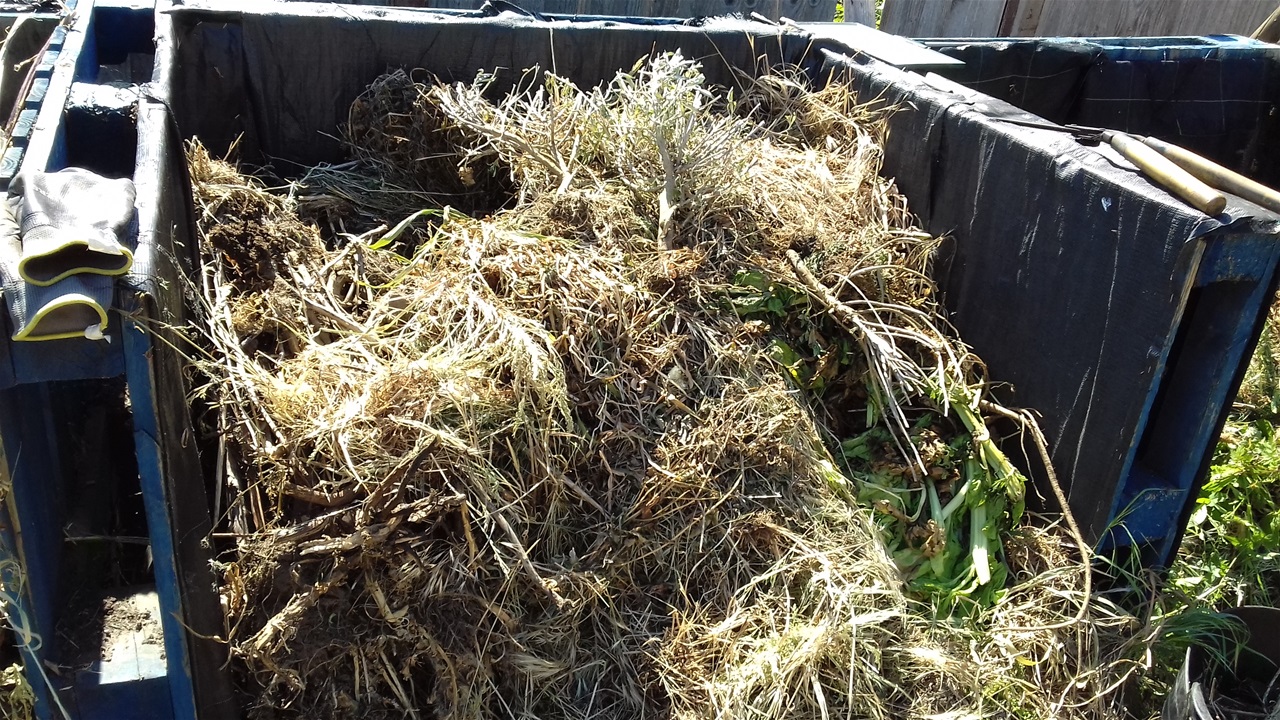
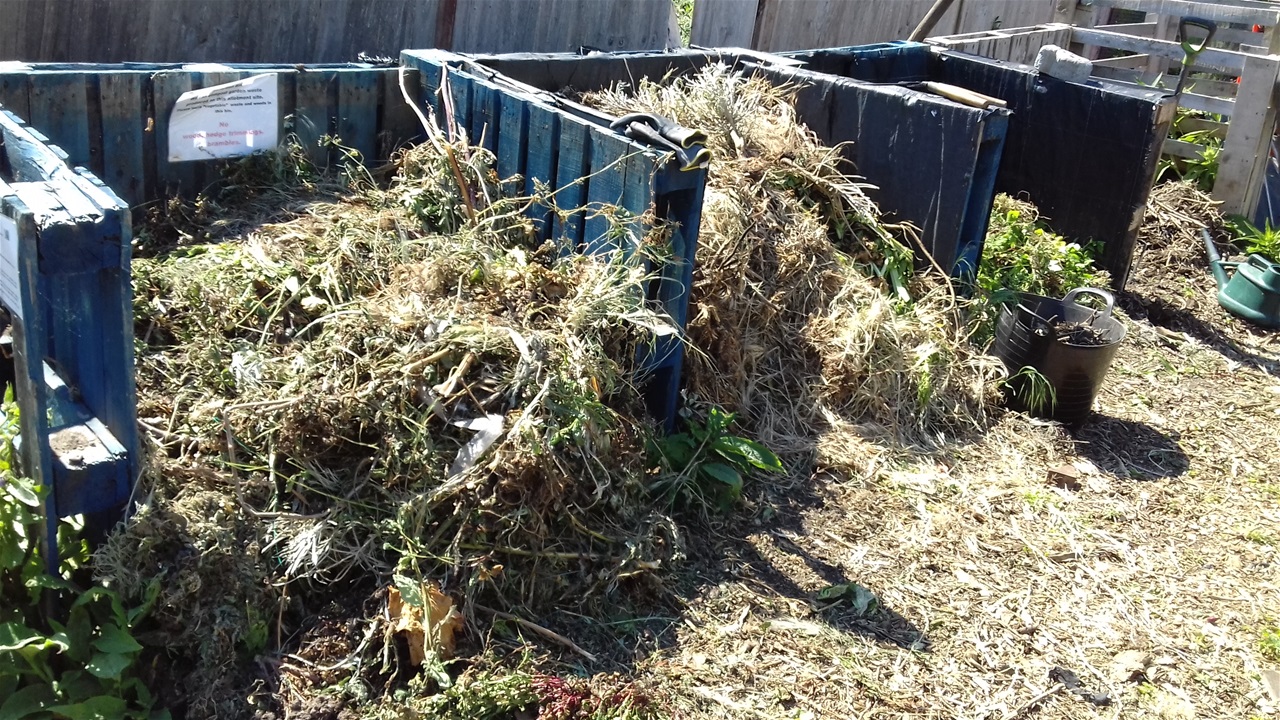
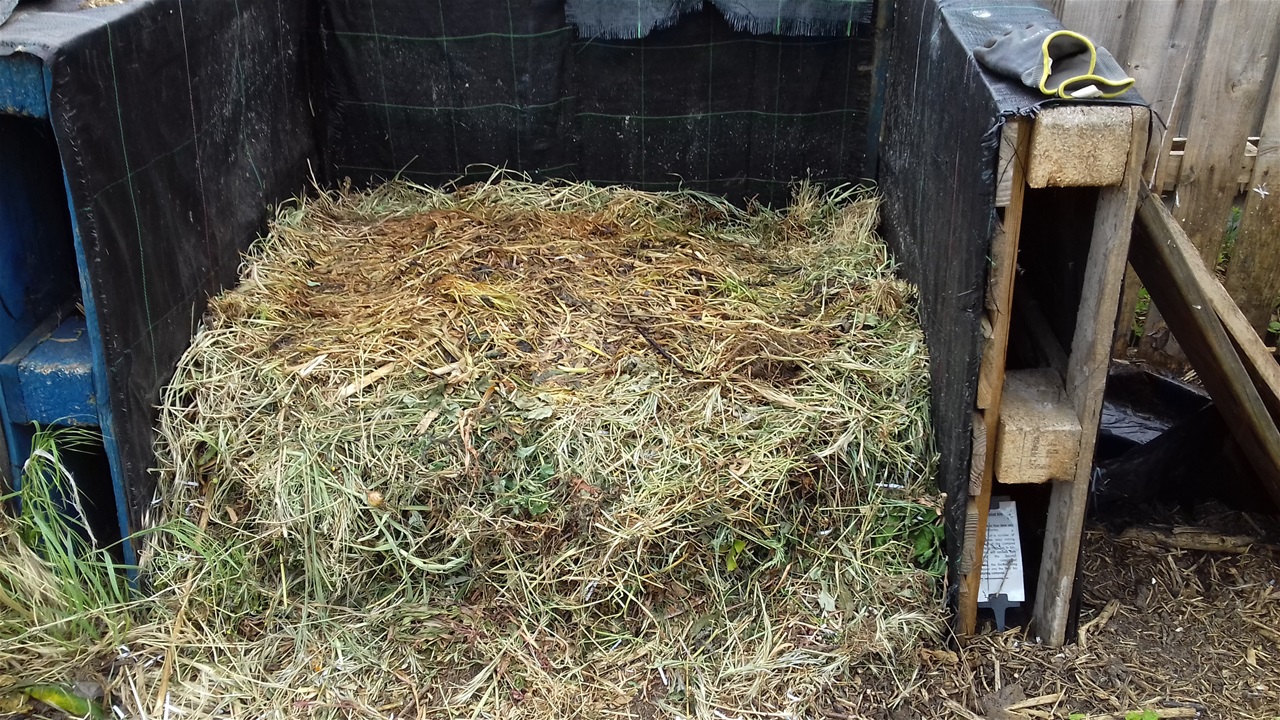
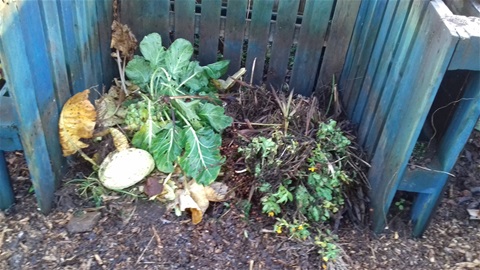
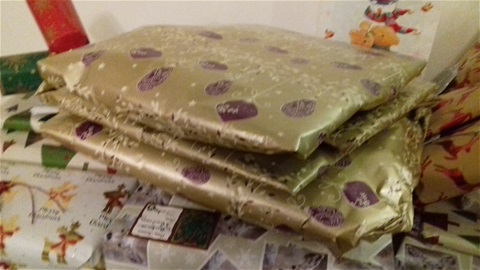
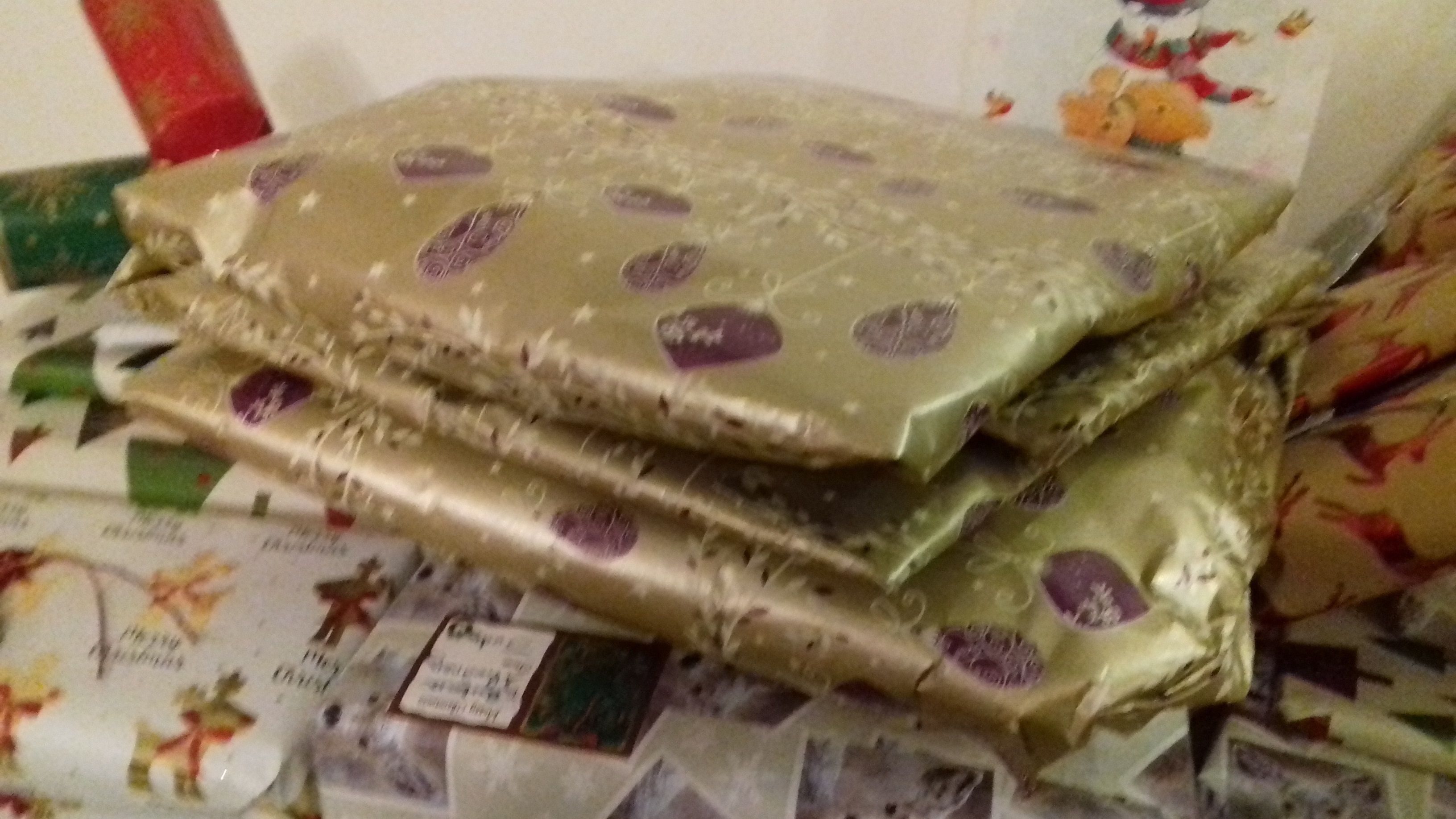
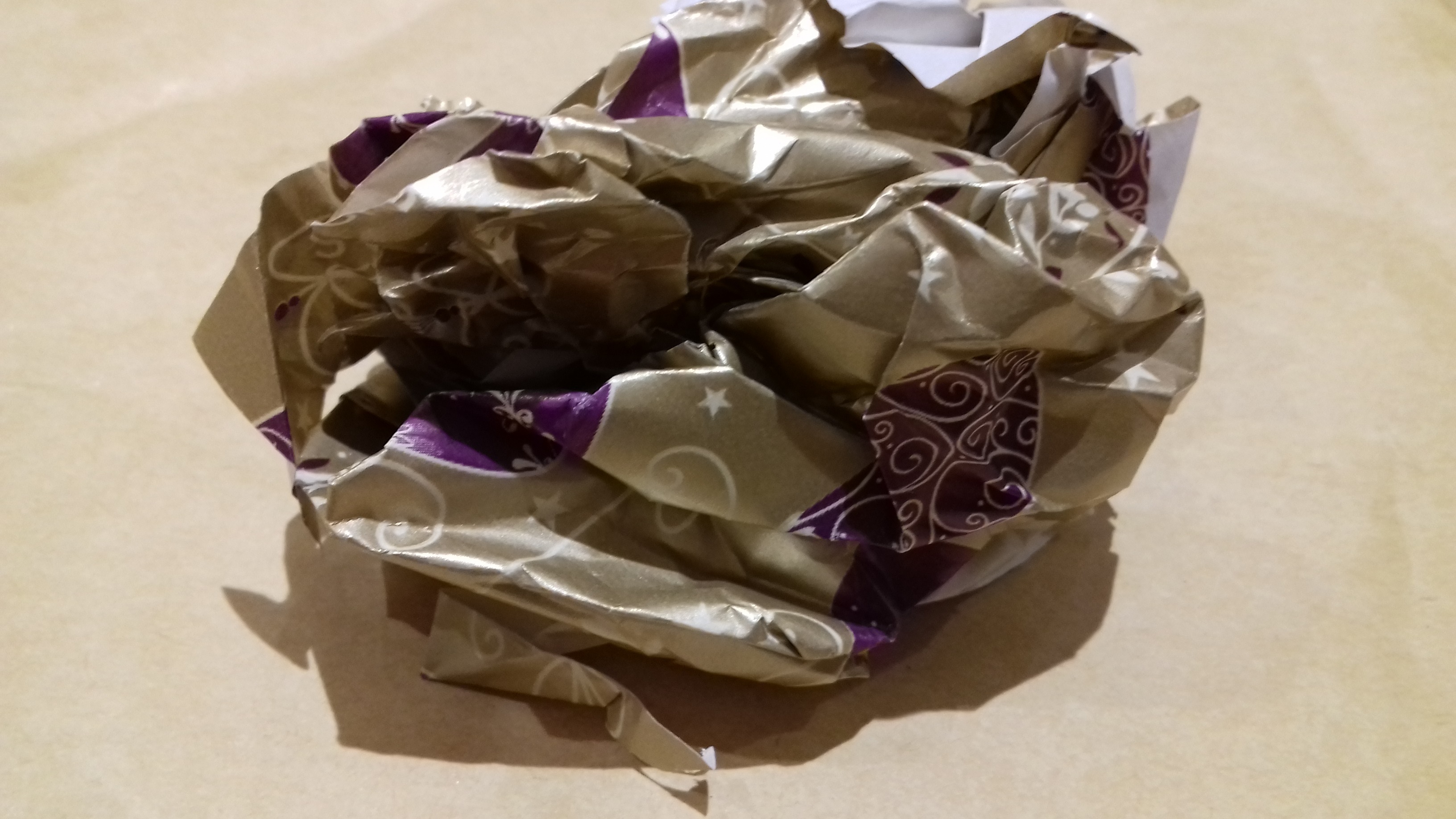
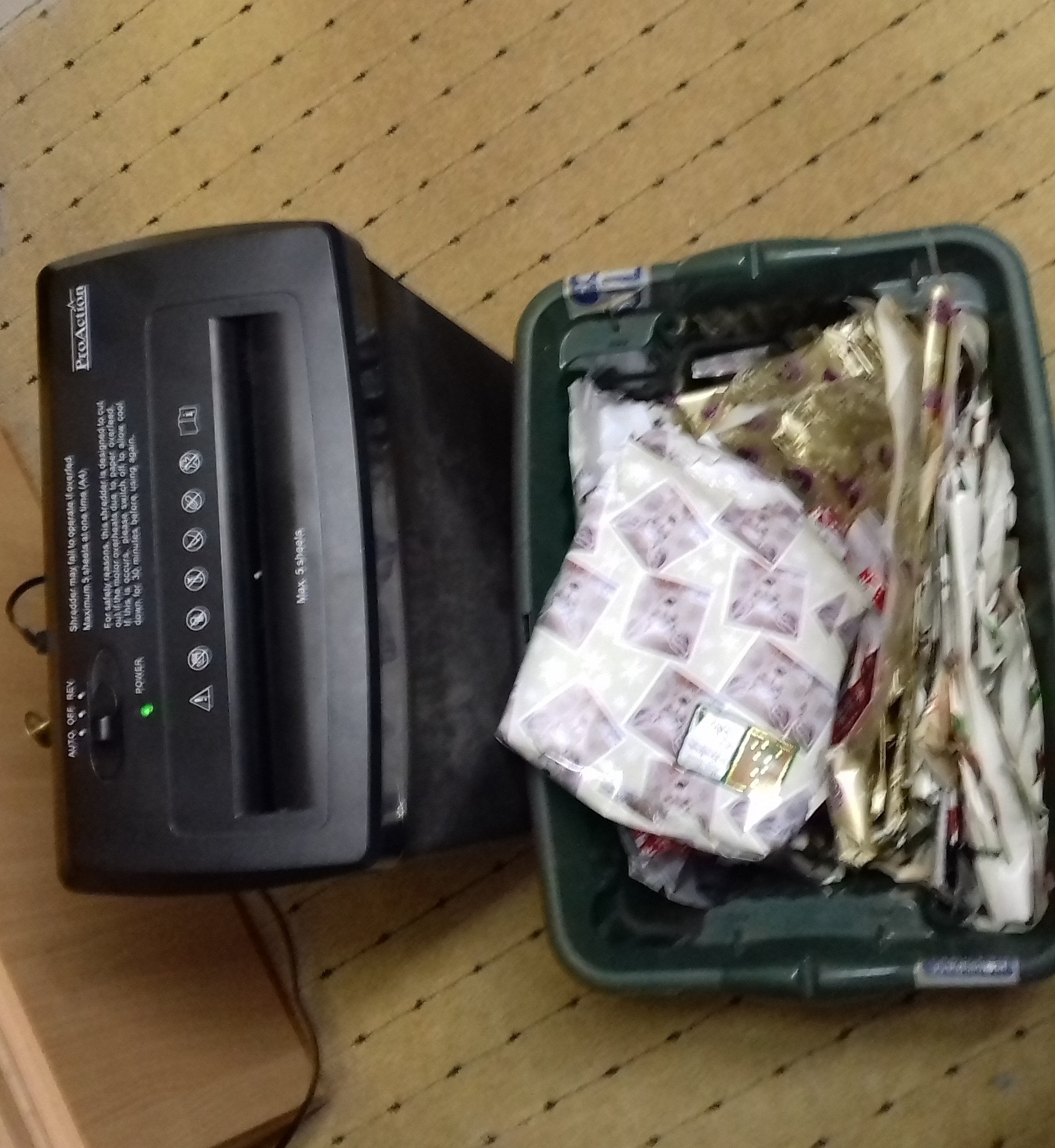
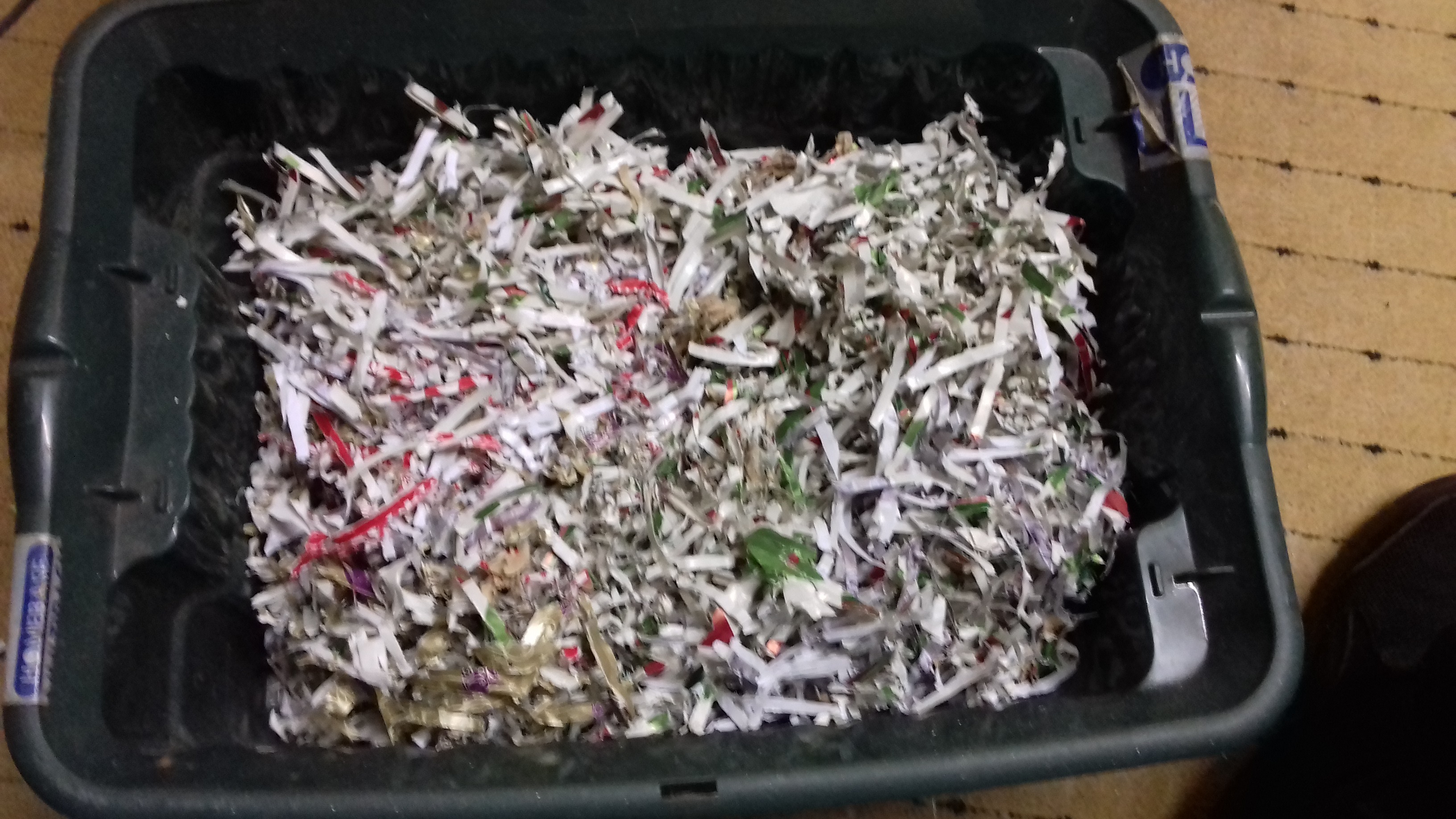
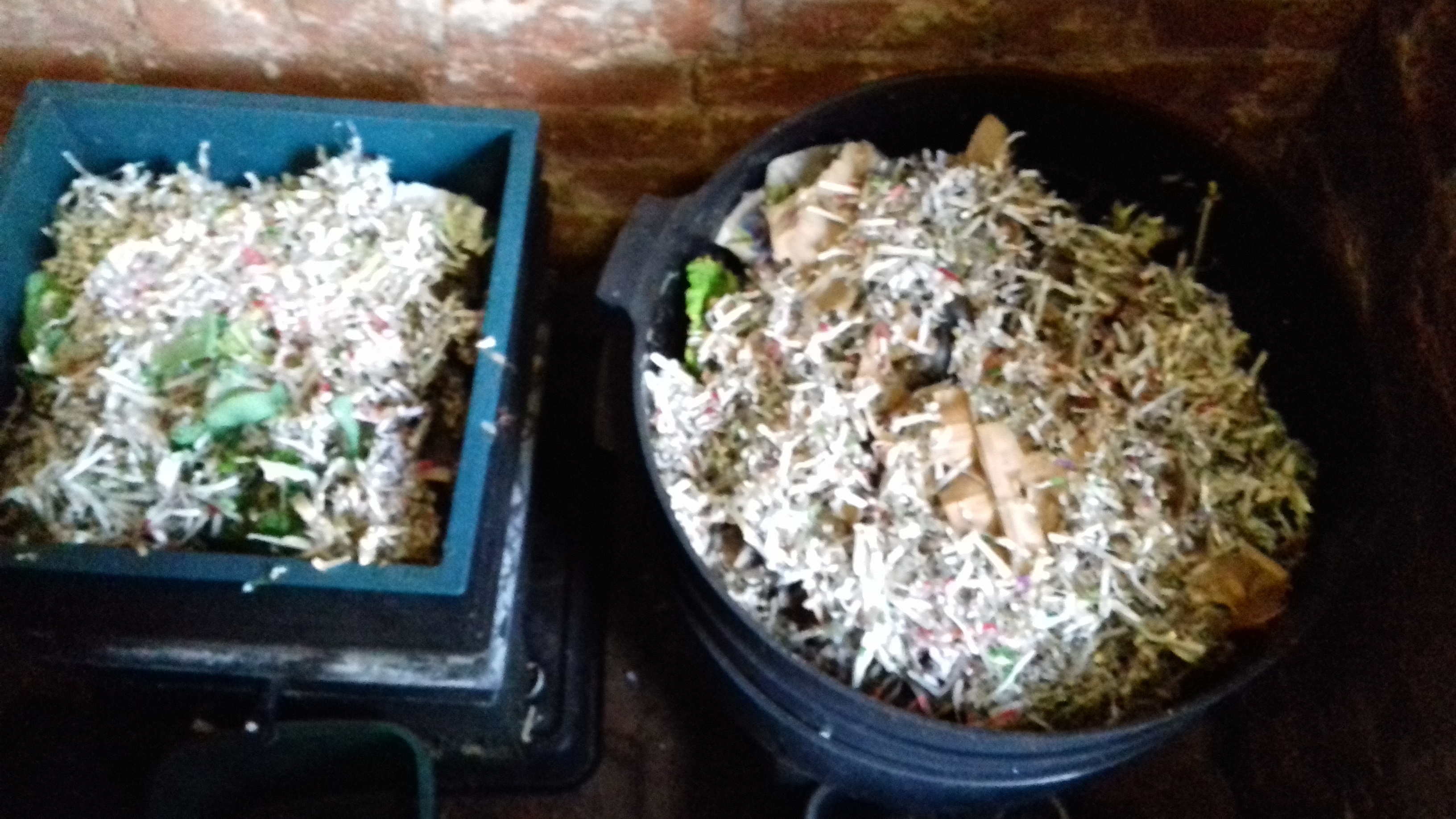
Latest comments
Do you have any data on ' application ' of Aerated Vermi Compost Tea to Mangoes and benneficial outcomes .
Very informative site. Having been away for 5 weeks and returning to evidence of rats under and around the compost bin, I can testify to lack of human activity allowing the rats to get comfortable.
can i use dog manure in compost and mulching leaves?
What is the C and N ratio for coffee chaff?